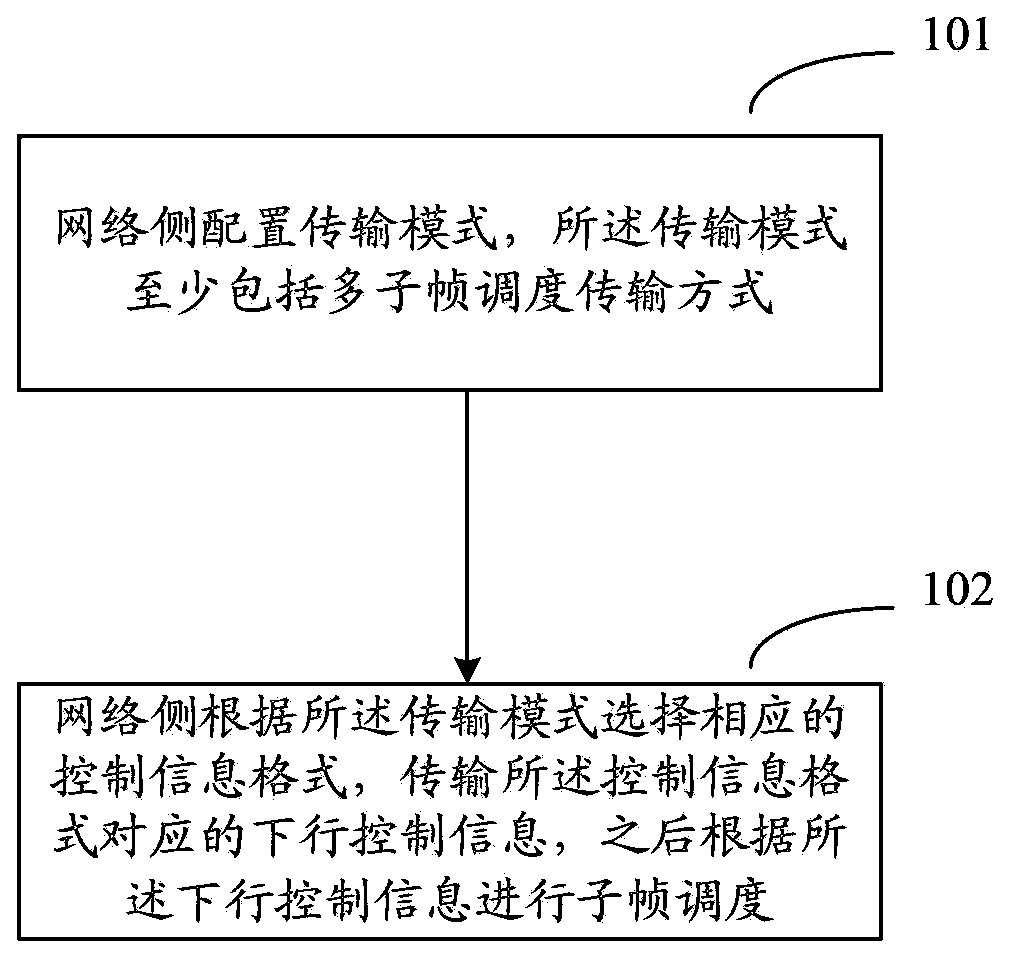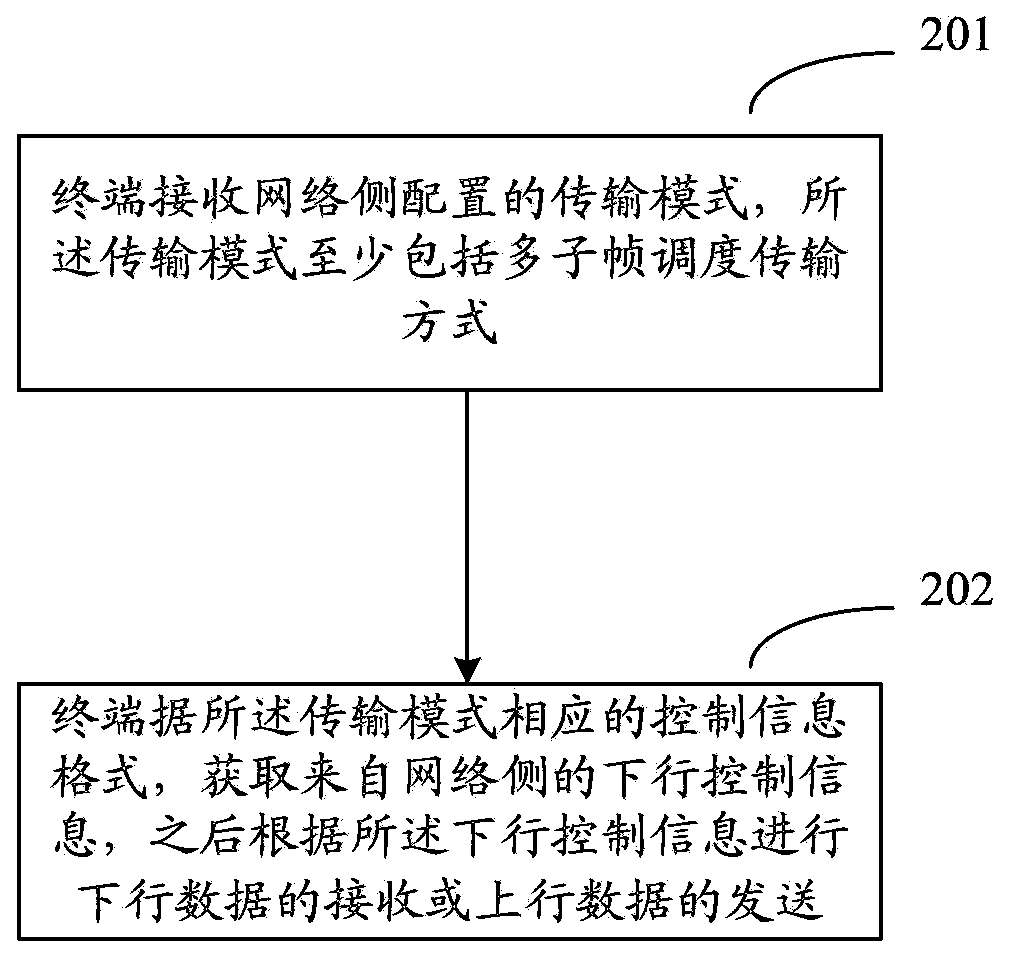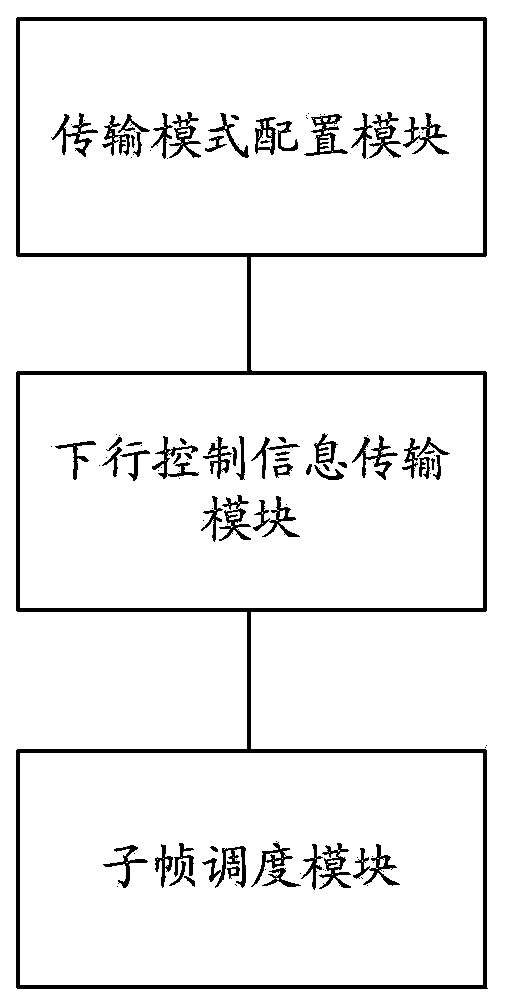Subframe scheduling method, system, network equipment and terminal
A multi-subframe scheduling and frame scheduling technology, applied in the field of wireless communication, can solve the problems of large control signaling overhead, poor scheduling flexibility, and affecting spectrum efficiency, so as to reduce control signaling overhead, improve scheduling flexibility, and save Effects on system resources
- Summary
- Abstract
- Description
- Claims
- Application Information
AI Technical Summary
Problems solved by technology
Method used
Image
Examples
Embodiment 1
[0136] This embodiment describes in detail the multi-subframe scheduling method provided by the present invention for downlink data transmission in an FDD (Frequency Division Duplexing, frequency division duplex) system.
[0137] The specific processing steps on the base station side are as follows: figure 1 shown, where:
[0138] Preferably, the base station indicates the use of multi-subframe scheduling instead of traditional single-subframe scheduling in one of the following four ways:
[0139] Way 1, distinguishing indications through the DCI format of the transmission mode. Two DCI formats are defined for the transmission mode, one for single-subframe scheduling and the other for multi-subframe scheduling. The base station indicates the use of multi-subframe scheduling by selecting the DCI format for multi-subframe scheduling;
[0140] In the second manner, the search space of the transmission mode is used to distinguish between single-frame scheduling and multi-subfram...
application example 1
[0166] This application example elaborates the newly defined transmission mode.
[0167] First, the system defines a new transmission mode, such as transmission mode X. This transmission mode can only be used for multi-subframe scheduling, or can be used for both multi-subframe scheduling and single-subframe scheduling. As for the mode that can be used for both single-subframe scheduling and multi-subframe scheduling, the base station can configure according to different situations to improve scheduling flexibility and system compatibility.
[0168] For the case where both single-subframe and multiple-subframe scheduling can be performed, the base station can distinguish between indicating single-subframe or multiple-subframe scheduling in the following manner.
[0169] Mode 1, distinguishing indications through the DCI format of the transmission mode. It is defined that transmission mode X includes two DCI formats, DCI format1A and DCI format1F. DCI format1A is the origina...
application example 2
[0181] This application example describes the situation of the scheduled subframe.
[0182] The multiple subframes to be scheduled can be a predefined number of fixed subframes, such as a fixed number of continuous or discrete subframes, consecutive subframes 1, 2, 3, 4 or 6, 7, 8, 9, or , consecutive subframes 1, 2, 3, or 4, 5, 6 or, 7, 8, 9. Or several discrete subframes, the discrete interval is fixed at 2, and the subframes are 2, 4, 6, 8 or 1, 3, 5, 7, etc.
PUM
 Login to View More
Login to View More Abstract
Description
Claims
Application Information
 Login to View More
Login to View More - R&D
- Intellectual Property
- Life Sciences
- Materials
- Tech Scout
- Unparalleled Data Quality
- Higher Quality Content
- 60% Fewer Hallucinations
Browse by: Latest US Patents, China's latest patents, Technical Efficacy Thesaurus, Application Domain, Technology Topic, Popular Technical Reports.
© 2025 PatSnap. All rights reserved.Legal|Privacy policy|Modern Slavery Act Transparency Statement|Sitemap|About US| Contact US: help@patsnap.com



